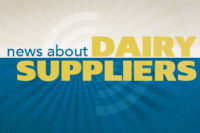
Hedging Is No Gamble In Removing Price Risk
by Dave Kurzawski
One of the most common
misconceptions from corporate executives concerning hedging their
company’s price risk in the futures market — any futures market
— is that it is a gamble.
You are either right or wrong with your hedge. Take,
for example, the recent hedging success of one of the largest, most
profitable discount airlines in the United States: Southwest Airlines.
Southwest has received much free press over the past two years due to
hedges it initiated to protect fuel costs. During a Nightly Business Report interview
in October 2004, Southwest CEO Gary Kelly remarked, “We’re 80
percent hedged here in the fourth quarter of 2004 at about $24 a barrel and
we’re 80 percent hedged all of next year at $25 a barrel and about 60
percent hedged in 2006 at 31 and hedges after 2006 as well. So we have
insurance in place to protect against $55 crude oil prices, but we’ll
see increasing energy prices over time, but certainly not to the extent
that our competitors are seeing.”
In light of companies like Southwest, it is
increasingly more important to look under the hood at the dairy
industry’s hedging practices. A casual glance will show that over the
life of the dairy markets, hedging by dairy-related companies has grown
steadily.
Remarkably, however, still only a fraction of the $90
billion dairy industry takes advantage of the hedging alternatives
available. Many actually think hedging will add risk.
Despite ongoing efforts to educate otherwise, the
perception of market speculation is the primary reason for standing on the
sidelines. What a cheese manufacturer might think is a gamble, a grain
elevator might think is essential to its survival (in the
cheesemaker’s defense, the corn futures market, for example, has had
a 150-year head start). This is an indisputably large hurdle to overcome
with so many businesses in the dairy industry existing for decades without
hedging.
In addition to the “did I beat the
market?” mentality, hedging has its own jargon, which can discourage
even the brightest business minds. What is the initial margin on a butter
contract? Do we need to be long or short the Class III market to protect
ourselves? Should we use futures contracts or options on futures?
What’s the difference?
For the sake of your business — and your peace
of mind — finding a comfort level with market terms is critical to
breaking down the barrier to hedging. The broker you select should make you
comfortable with the process, but remember to talk to him and her in your
terms. Don’t let the lingo hold you back.
Looking back, everyone agrees the corporate captains
of Southwest Airlines are happy with their decisions to hedge their single
largest expense. But if the price of crude oil prices had fallen —
instead of risen $30 to $40 a barrel since 2004 — would they have
been crying in their bag of mixed nuts? That’s like asking your
loving spouse if he or she would have been better off collecting on your
life insurance policy last year. Maybe they could have paid off the house
and bought a shiny new car, but rest assured, he or she is happier with
you.
The objective behind using tools to manage your
company’s price risks — whatever those risks — is not to
profit or gamble. Your goal is to remove price risk.
Dave Kurzawski is an account executive with
Chicago-based commodities brokerage Downes-O’Neill LLC.
$OMN_arttitle="Hedging Is No Gamble In Removing Price Risk";?>
